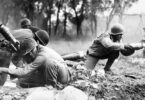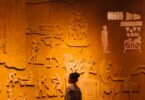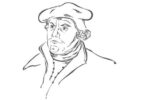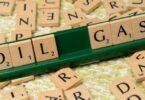Who was the first emperor of the Dynasty?
(a) Kangxi
(b) Yongzheng
(c) Qianlong
(d) Jiaqing
Which region of the Qing was ceded to Russia in the Treaty of Aigun?
(a) Manchuria
(b) Xinjiang
(c) Tibet
(d) Taiwan
Which of the following was a significant achievement of the Qing Dynasty in the field of military technology?
(a) Invention of the crossbow
(b) Development of the horse cavalry
(c) Creation of the navy
(d) Introduction of the repeating rifle
Related: Quiz about Tang Dynasty of China
Which emperor was known for his literary and artistic accomplishments?
(a) Emperor Kangxi
(b) Emperor Yongzheng
(c) Emperor Qianlong
(d) Emperor Jiaqing
Which of the following factors contributed to the collapse of the Dynasty?
(a) Economic decline
(b) Western imperialism
(c) Internal rebellions
(d) All of the above
In what century did they rule China?
(a) 14th century
(b) 16th century
(c) 18th century
(d) 20th century
Which of the following military campaigns marked the expansion of the Dynasty’s territory to include Tibet?
(a) Conquest of Dzungaria
(b) Campaign against the Three Feudatories
(c) Gurkha War
(d) Sino-Nepalese War
Which military campaign was fought between the Qing and the British Empire, resulting in China’s cession of Hong Kong to the British?
(a) First Opium War
(b) Second Opium War
(c) Sino-French War
(d) Russo-Japanese War
Which of the following motifs was commonly used in Qing art, particularly in the decoration of textiles and furniture?
(a) Dragons
(b) Tigers
(c) Elephants
(d) Giraffes
Which of the following was a major commercial hub during the Qing Dynasty, which facilitated trade between China and Western countries?
(a) Guangzhou
(b) Suzhou
(c) Nanjing
(d) Beijing
Which of the following was a significant event during the Qing Dynasty?
(a) Opium Wars
(b) Boxer Rebellion
(c) Taiping Rebellion
(d) All of the above
Related: Song Dynasty Questions
Which major river flows through the heartland of the Qing Dynasty?
(a) Mekong River
(b) Yangtze River
(c) Ganges River
(d) Irrawaddy River
Which of the following was a significant achievement of the Qing Dynasty in the field of literature?
(a) Publication of the Dream of the Red Chamber
(b) Invention of calligraphy
(c) Development of Taoist philosophy
(d) Creation of the Silk Road
Which Qing Dynasty emperor was known for his strict adherence to Confucian principles and emphasis on morality?
(a) Emperor Kangxi
(b) Emperor Yongzheng
(c) Emperor Qianlong
(d) Emperor Jiaqing
Which of the following was a major consequence of the collapse of the Qing Dynasty?
(a) Establishment of the Republic of China
(b) Establishment of the People’s Republic of China
(c) Formation of the Chinese Communist Party
(d) All of the above
When did the Qing Dynasty officially end?
(a) 1911
(b) 1949
(c) 1976
(d) 1989
Which military campaign was fought between the Qing Dynasty and the Japanese Empire, resulting in the loss of Taiwan to Japan?
(a) Sino-Japanese War (1894-1895)
(b) Sino-French War (1884-1885)
(c) Boxer Rebellion (1899-1901)
(d) Russo-Japanese War (1904-1905)
Related: Questions about the Ottoman Empire
Which of the following was a key economic policy implemented by the Qing Dynasty to stimulate agricultural production and stabilize grain prices?
(a) The establishment of a national bank
(b) The promotion of foreign trade
(c) The introduction of new crop varieties
(d) The abolition of the land tax
What was the ethnic background of the Qing Dynasty rulers?
(a) Han Chinese
(b) Mongol
(c) Manchu
(d) Tibetan
Which of the following was a significant achievement of the Qing Dynasty in the field of science and technology?
(a) Invention of movable type printing
(b) Discovery of the magnetic compass
(c) Development of porcelain production
(d) Creation of the Terracotta Army
Which Qing Dynasty emperor was the last to reign before the overthrow of the imperial system and establishment of the Republic of China?
(a) Emperor Kangxi
(b) Emperor Yongzheng
(c) Emperor Guangxu
(d) Emperor Xuantong (Puyi)
Which of the following emperors was the last to reign during the Qing Dynasty?
(a) Emperor Kangxi
(b) Emperor Guangxu
(c) Emperor Qianlong
(d) Emperor Jiaqing
Which of the following was a famous art school during the Qing Dynasty, known for its intricate paintings that often depicted the daily life of the people?
(a) Yangzhou School
(b) Suzhou School
(c) Beijing School
(d) Guangzhou School
Which of the following commodities was a major export item of the Qing Dynasty, which resulted in a significant trade surplus with Western countries?
(a) Tea
(b) Silk
(c) Porcelain
(d) Cotton
Related: French revolution and Napoleon Quiz
What was the primary religion of the Qing Dynasty?
(a) Confucianism
(b) Taoism
(c) Buddhism
(d) Christianity
Which country borders the Qing Dynasty to the west?
(a) Japan
(b) Russia
(c) Vietnam
(d) India
Which of the following was a significant achievement of the Qing Dynasty in the field of art?
(a) Development of Chinese opera
(b) Invention of paper money
(c) Construction of the Grand Canal
(d) Invention of gunpowder
Which Qing Dynasty emperor was known for his long reign of 61 years, the longest in Chinese history?
(a) Emperor Kangxi
(b) Emperor Yongzheng
(c) Emperor Qianlong
(d) Emperor Jiaqing
Which of the following dynasties preceded the Qing Dynasty?
(a) Han Dynasty
(b) Tang Dynasty
(c) Ming Dynasty
(d) Song Dynasty
Which of the following foreign powers played a significant role in the downfall of the Qing Dynasty?
(a) Japan
(b) Russia
(c) Britain
(d) All of the above
Which of the following art forms reached its peak during the Qing Dynasty, as seen in the exquisite porcelain and intricate cloisonné works?
(a) Painting
(b) Calligraphy
(c) Sculpture
(d) Pottery
Which of the following was a significant achievement of the Qing Dynasty in the field of architecture?
(a) Construction of the Forbidden City
(b) Building of the Great Wall
(c) Development of pagoda architecture
(d) Creation of the Ming tombs
Which Qing Dynasty emperor was known for his military conquests and expansion of the empire?
(a) Emperor Kangxi
(b) Emperor Yongzheng
(c) Emperor Qianlong
(d) Emperor Jiaqing
Which of the following rebellions played a significant role in the collapse of the Qing Dynasty?
(a) Boxer Rebellion
(b) Taiping Rebellion
(c) Nian Rebellion
(d) Yellow Turban Rebellion
When did the Qing Dynasty begin its rule over China?
(a) 1368
(b) 1644
(c) 1911
(d) 1949
Which military general is known for his role in suppressing the Taiping Rebellion during the Qing Dynasty?
(a) Li Hongzhang
(b) Yuan Shikai
(c) Zuo Zongtang
(d) Feng Guozhang
Related: Quiz about Abraham Lincoln
Which of the following was a key military innovation introduced by the Qing Dynasty during its rule?
(a) Gunpowder
(b) Crossbows
(c) Fire lances
(d) Gatling guns






